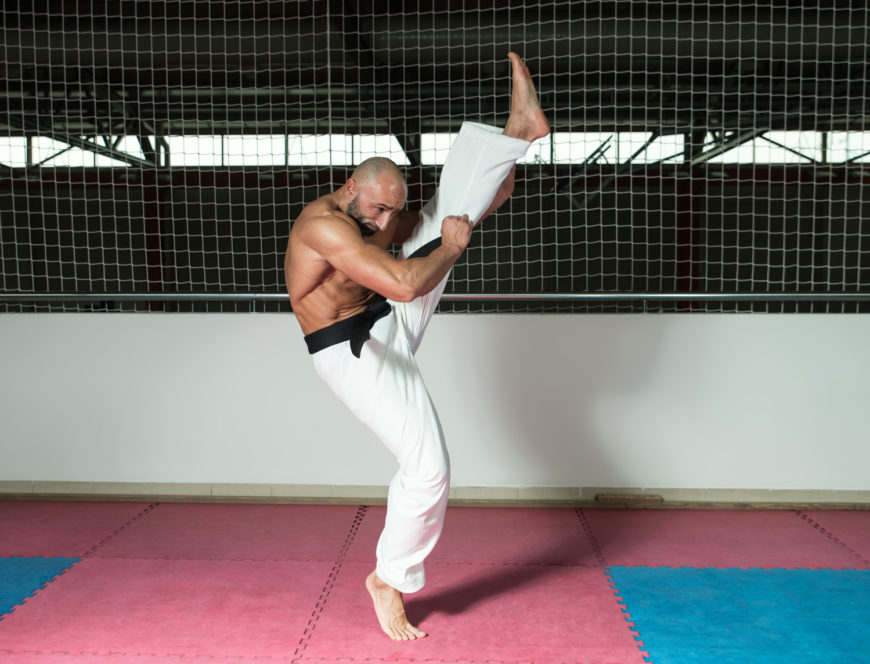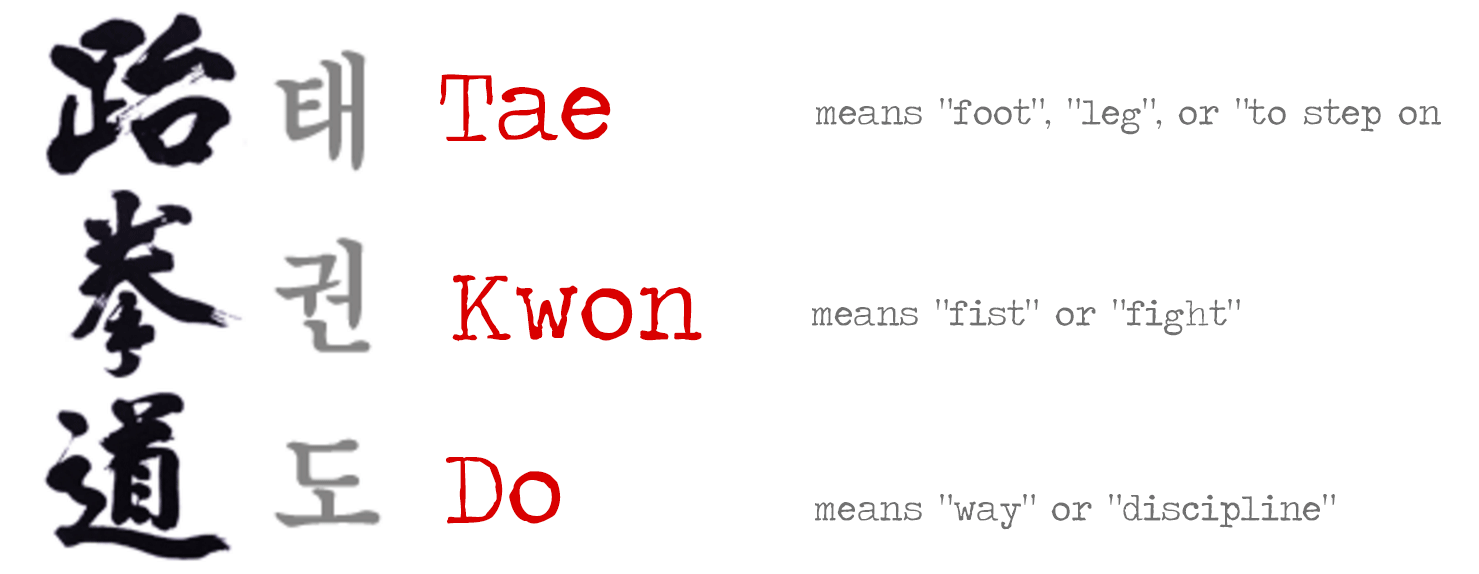Taekwondo is one of the most practiced martial arts in the world, yet people are still confused about how the Taekwondo belt system works. What makes it confusing about the belt system is that it’s very different to other traditional martial arts. So in this piece I’ll break down everything to do with Taekwondo.
What is Taekwondo?
Taekwondo is a martial art that was first created in the 1940s by Korean martial artists, the sport was designed to be a mix of Korean fighting styles (Taekkyeon, Gwonbeop & Subak) with Karate and Chinese martial arts. Taekwondo now an Olympic sport that is practiced all over the world. However, Taekwondo’s main goal was to teach self defense and counterattack in unarmed combat.
Taekwondo history
Taekwondo is considered a young martial art as people began to practice the sport in 1945 after the Japanese Imperial occupation of Korea came to an end. This was a significant time for Taekwondo as it allowed for martial arts schools, known as Kwans, to open and teach Taekwondo. The sport became so popular in South Korea that the South Korean military used Taekwondo as their unarmed combat discipline. In 1959 the first ever Taekwondo federation was founded, the Korea Taekwondo Association, this was a massive step for the sport as it meant that official competition could take place which would then boost the sports popularity.
A big step that helped launch the sport to international fame was the introduction of Taekwondo as a demonstration sport in the 1988 Olympics in Seoul, South Korea and then later be added as a full medal sport at the 2000 Olympics in Sydney, Australia. Now the sport is only one of two Asian martial arts, with Judo, that are permanently a part of the Olympic Games.
What does Taekwondo mean?
The name ‘Taekwondo’ actually has meaning behind it, when translated to English the name perfectly fits the description of the sport. ‘Tae’ means the legs or lower torso, which are of massive importance in Taekwondo as they provide the necessary force to jump, move around and throw kicks. The lower torso is also heavily relied on when competing as it determines someone’s speed. ‘Kwon’ is translated to fist or fight but it actually means ‘striking with hands.’ Kwon refers to anything related to the upper body such as arms, torso, elbows, fists and finger tips.
Another important part of the meaning of Kwon is that it also means defense. Taekwondo puts huge emphasis on the importance of balance between attack and defense. “Do” means “the way.” This is the mental part of the sport that refers to the mind and shows it is deeper than just training yourself physically. Anyone with experience in Taekwondo knows that in training they put the same importance on the physical training as they do the training of the mind.
What is the Taekwondo belt system?
The Taekwondo belt system is designed for 2 main reasons, first to measure a person’s level at Taekwondo. Secondly, it helps put on fair competition that ensures the two competing are at the same level.
Belts in Taekwondo are divided into 2 groups, junior and senior belts.
Junior Belts: This belt is the first that anyone starts with, and the people with any rank of a junior belt are known as geup (급.) There are different Taekwondo organizations and depending on which one your school is a part of will determine how many junior belts there are, generally speaking there are between 8 to 12 in all organizations. The sequence for geup ranks begins with the larger number for white belts, and then counts down to 1st geup as the highest color belt. For instance, in an organization that has 10 belts a white belt would be considered 10th geup.
Senior Belts: These belts are only given to black belts in the sport, and anyone who is a senior belt is known as dan (단.) Normally, there are 9 senior belts that can be achieved and the rankings of the belts are opposite to the junior belts. For example, the lowest possible black belt would be called a 1st dan.
Taekwondo belts order & colors
The belt order and colors in Taekwondo are different to other traditional martial arts as it depends fully on which organization the school is affiliated to. In the Taekwondo world there are a number of organizations but the main ones are World Taekwondo, the International Taekwondo Federation, ATA Martial Arts. Here are the colors and belt orders from lowest ranking to highest.
World Taekwondo:
- White
- Yellow
- Orange with yellow stripe
- Green
- Green with blue stripe
- Blue
- Blue with black or blue stripe.
- Brown
- Red
- Black
International Taekwondo Federation:
- White
- White with gold stripe
- Gold
- Gold with green stripe
- Green
- Green with blue stripe
- Blue with red stripe
- Red
- Red with black stripe
- Black
ATA Martial Arts:
- White
- Orange
- Yellow
- Camouflage
- Green
- Purple
- Blue
- Brown
- Red
- Black
Taekwondo Black Belt
For anyone that begins to compete in Taekwondo their first goal is to achieve a black belt, which at first may seem like tall and tough task, however in comparison to other martial arts, Taekwondo has one of the shortest average times to achieve a black belt. With consistent and disciplined training people can get a black belt in just 3 years. When someone gets promoted to a black belt, they then have to work their way up the black belt ladder. The person starts as a first degree black belt (1 stripe) and keeps working their way up all the way to a 10th degree black belt.
It should be known that a 10th degree black belt is very hard to get and is just an honorary title usually given to people in Taekwondo who have influenced the sport or achieved massive things in Taekwondo. In 2011 history was made when Keiko Fukuda, aged 98, became the first ever woman to hola a 10th degree black belt in Taekwondo.

Related: Which Martial Art Black Belt Takes The Longest Time To Achieve?
How to get a higher level belt?
One way in which Taekwondo is unique to other martial arts is how someone advances through the belts, it’s not like other martial arts where the more someone trains and improves the higher the belt you get by your teacher. In Taekwondo, in order to progress to the next belt a student has to go through promotion tests, in which the person demonstrates their skills in numerous aspects of Taekwondo in front of their teacher or a panel of judges.
This test usually varies slightly from school to school, however the test is generally similar for all schools. The exam for each test will involve 6 different parts that will test a students proficiency in various areas of Taekwondo and the level belt that the student is at will determine the difficulty of the test.
A typical promotion test will have these 6 parts:
- Poomsaes: Poomsaes are a mixture of the basic punch, kicks & blocks that Taekwondo students must know in order to achieve promotion.
- Sparring: One of the most important parts of the test, how someone performs in sparring will determine if he/she is ready for promotion to the next belt.
- Conditioning: This could range to a number of things including push ups, sit-ups, sprinting & long distance running. Taekwondo techniques are also needed in this part, for example throwing a number of kicks with correct technique in a given time period.
- Flexibility: Being flexible is of massive importance to any Taekwondo practitioner as it determines how high someone can throw a kick. Performing the splits is essential for people training Taekwondo.
- Self Defense: The person must show effective self defense methods for instance, finding the pressure points in someone or using the push kick effectively to force some distance between you and the person.
- Knowledge Test: This usually involves answering some questions on terminology, techniques, and the sports history to show adequate knowledge of Taekwondo. For higher black belt tests, students might be required to take a written exam or submit a research paper.
Next: How To Choose The Right Martial Art Style For You?
Frequently Asked Questions (FAQ’s)
How long does it take to get a black belt in Taekwondo?
This depends on the person and the amount of hours someone puts in. The World Taekwondo (WT) website states that if you are doing the average hours of training, which is 40 per month, then you can achieve a black belt in 3 years. However, there are other factors that determine how quickly a black belt can be achieved such as age & natural talent.
Can you start taekwondo at any age?
In all of martial arts there is no maximum age that someone has to be to start training. Anyone can start training at any time and find a gym with classes for their level of experience. Obviously, the older you are the harder it will be to become a professional competing regularly.
How many belts are there in Taekwondo?
This depends on which organization your school is affiliated with, in general there are between 8-12 belts. A promotion doesn’t mean a new color belt, some promotions will come with the same belt but with a stripe added which indicates a higher degree of the same color.
Is Taekwondo good for self defense?
Taekwondo is one of the most effective martial arts in terms of self defense. The sport was originally created as a means for self defense by teaching students how to manage distance by keeping someone as far away as possible by using kicks.
Is Taekwondo hard to learn?
Like any sport, discipline is needed to be able to excel in Taekwondo. If you are disciplined enough and enjoy the training then Taekwondo will be a rewarding sport for you.
What do you call a Taekwondo instructor?
In Taekwondo the instructor leading the class is called sabom (사범), which is pronounced ‘sah-bom.’ Many people think the instructor is called a sensei, which is incorrect as sensei is a term used for Japanese martial arts and not Korean.











1 thought on “Taekwondo Belt Levels and Ranking Guide”
I am trying to locate my Taekwondo Instructor while in the Air Force stationed at Zaragoza AB. Spain between 1980-1982. His name is Jose Gonzolas, his was a 3rd degree Black Belt. If anyone knows him please give him my email address.
Thank You.